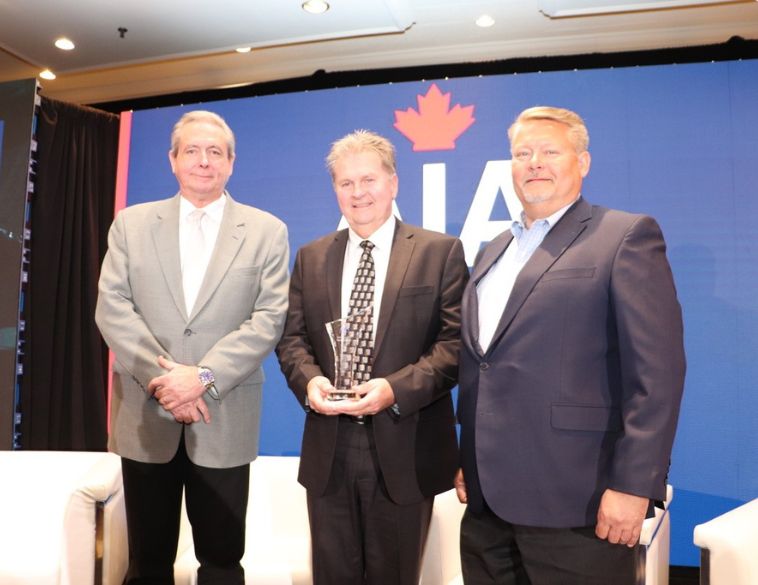Autosphere sat down with Sean Nguyen, Lubricant Scientist and Technology Trainer at Shell Global Solutions to find out about how lubricant manufacturers and distributors like Shell can continue to thrive amid this environment and, what are some of the real trends being observed in the transportation sector and how lubricants will play a role in that moving forward.
At the end of last year, Kline & Company’s 18thEdition Global Lubricants: Market Analysis and Assessment 2020 report revealed that among suppliers of finished lubricants worldwide, Shell was ranked globally as number one.
This marks the 14th consecutive year that Shell has received this accolade, and is no small feat, especially, given the immense challenges facing the world today, such as the COVID-19 pandemic, as well as political pressure on “greening” the vehicle fleet.
Shell leading automotive sector
Autosphere: Based on the results from Kline & Company’s recent Global Lubricants Market Analysis and Assessment report what do you feel are some of the key reasons why Shell continues to remain a leader in this sector (particularly as it relates to the automotive industry)?
Sean Nguyen: If we look at both the Shell and Pennzoil brands when it comes to that technology direction, an essential part of it is the ability to stay focused on three major pillars.
These are pillars of innovation, pillars of application and pillars of partnerships. Supporting these three pillars on the R&D side helps us stay innovative and at the forefront when it comes to technology innovation. Also, this strategy is supported by Shell’s five global technology hubs, including the one here in Houston as well as others in Shanghai, China, Hamburg, Germany; Bangalore, India and Atsugi in Japan.
These hubs allow us to have eyes and ears around the world, enabling us to be at the forefront in seeing what is happening out there in the market as well as socio-economic changes taking place. From my perspective, that is essential in staying ahead of the game.
Shell’s approach to electrification
With a prevailing trend toward electrification of the vehicle fleet, can you tell us a little about Shell’s approach to this new market and some of the products it sees as becoming increasingly viable down the road?
SN: From a high-level perspective, I can say that on the lubricants side, we are expanding our special fluids portfolio (Shell E-Fluids) to support electric powertrains and commercial vehicle applications in the industry.
As you know, various OEMs are tackling this with different strategies from battery electrics, to hybrids, to hydrogen fuel cells. The situation is constantly changing and we are working closely with OEMs to help deliver some of the efficiencies they are looking for.
Key factors in engine lubrication protection
Getting back to the present and internal combustion engines, what are some of the key factors necessary in today’s lubricants to ensure these engines are protected, perform at their best and produce the least amount of emissions?
SN: When it comes to highway and off-highway engines, the drivers for efficiency over the last decade with Corporate Average Fuel Economy (CAFE) standards have been to reduce vehicle emissions as well as getting the most fuel mileage we can. The driver on the lubricant side for the OEM market is a reduction in viscosity, which we’ve been able to deliver by introducing natural gas-based oil, which we call GTL (Gas to Liquid Technology).
GTL allows us to deliver performance protection and durability for modern engines. And if you look at it, when we work with our OEM partners, we know they want to do this, and if we can correlate this into greater efficiencies and better fuel mileage, we can drive down emissions.
Working closely in partnerships with the OEMs, we can share with them our understanding of how we can achieve these efficiencies without detriments to wear protection, especially with the introduction of smaller-displacement engines, turbocharging, lighter materials and higher compression ratios. When you’re trying to push the boundaries of efficiency on an engine, the lubricants are the first line of defence and need to be formulated to maximize engine life and minimize wear.
A good example of this concerns the heavy-duty vehicle industry. It took a long time to convince the industry to shift from 15W40 to 5W20 oils and it required spending millions in on-highway road trials to show diesel engine manufacturers that our technology did not have detriments and that it provided them with a 5% efficiency improvement.
By taking this step, we were able to come to the table as trusted partners and clearly demonstrate that despite the pressure to advance engine technology by introducing new materials, different honing processes, power adders and other features such as advanced timing, stop-start technology and high compression ratios—through extensive research and testing were able to identify where the key issues were and provide a suitable and practical solution when it comes to lubricants for these engines.
Key factors to developing lubricants
Related to OEM relationships, what are some of the key factors to consider when developing lubricants, considering the increasing number of OE spec oils on the market?
SN: Speaking about Shell specifically, we can say that our lubricants have been recommended and approved by over 3000 OEMs in the market, which in many cases we have served for generations. Being able to do that requires having diversified teams around the world at our five technology centres, that can understand the needs of the OEMs we support, identify their pain points and understand the direction in which they are taking their business.
Doing this requires having dedicated people to support the OEMs in field trials that range from on-highway and fleet use, to racing and even off-road situations, as well as collaborating with them to develop and demonstrate performance and durability without compromising the new propulsion technology they are working on. By carefully listening to our OEM customers we are able to deliver a product that both they and the end consumer can benefit from.
Trends in auto lubricants
What are some of the trends you’re seeing in terms of the types of lubricants that are increasingly in demand for the auto sector and how does that vary by region, for example, North America, Europe and Asia?
SN: Every region in the world has its own unique strengths and challenges that result in innovation and collectively these regions provide us with an overall global picture. In the automotive industry, we’ve seen a big shift to synthetic oils in the last 10 years and today, over 80% of vehicles that leave the assembly line are filled with synthetic oil.
We’ve also seen lower and lower viscosity oils and also OEMs introducing longer and longer drain intervals. With newer metallurgy and materials and, as previously mentioned smaller-displacement engines, more forced induction engines and other features such as direct injection and higher compression ratios, these technologies have all presented challenges. A good example is low-speed pre-ignition (LSPI) that has been a common issue with small, turbocharged, direct-injected high-compression engines.
Being at the forefront of technology trends allows us to provide solutions and Shell was the first to develop an LSPI motor oil to deal with this problem. We’ve also introduced the first 0W16 motor oil and are experimenting with even thinner viscosities, such as 0W04 in the Japanese market.
Although we haven’t seen this in North America yet, by leveraging our experience in motorsport as well as natural gas-based oils and advances in additive technology, we’re able to formulate ultra-thin oils that don’t have any detriments when it comes to wearing performance and protection.
Motorsport and lubricant technology
Motorsports has always been seen as the starting point for what ultimately trickles down to the regular automotive sector. Are there some particular lubricant technologies that have proved hugely successful in motorsports in recent years, including the likes of Formula 1, sports and touring car racing and rallying that also have notable benefits on the street?
SN: At Shell, we’ve had a very long association with motorsport, from Formula 1, with our partnership with Ferrari for example, to Drag Racing, NASCAR and IndyCar. The technology we have been able to incorporate into racing vehicles has led to some major wins, including the Indianapolis 500 and that success and the testing and research that enable it, can be directly applied to some of our consumer products, such as the line of Pennzoil platinum lubricants.
On a personal level, I have been involved in some of the technical development in this area including some of the patents, along with developing friction modifiers and anti-wear components. And for both OEMs and consumers, wear is a critical issue, especially when you get down to lower viscosity oils. A “thin” oil does not have what we call a great level of the oil film.
As a result, ensuring adequate wear protection on these types of oils requires not only research but extensive field testing so that we can determine the performance of the oil under a whole range of different scenarios and can stand up and support our claims when it comes to that performance and protection capability.
Final thoughts
Is there anything else you’d like to mention?
SN: Receiving this accolade from Kline & Company is a great privilege for us, but when you are labelled as number one it does put a big target on your back. To live up to that reputation requires staying focused on your customers, from the OEMs down to regular consumers and motorists like you and me. And it requires a thorough understanding of not only what those customers’ needs are but also the conditions they operate in.
If we look at Canada for example, our GTL technology allows us to deliver products that can excel in extreme cold, as well as other climates where extreme heat is a factor. Again, being able to successfully deliver products like this requires understanding what our customers’ needs are and staying at the forefront of technology and industry trends.
There’s also the ability to provide the distribution channels that ensure customers are able to get the quality lubricant products they need, when they need them, whether it’s through retail outlets or networks like Jiffy Lube.



